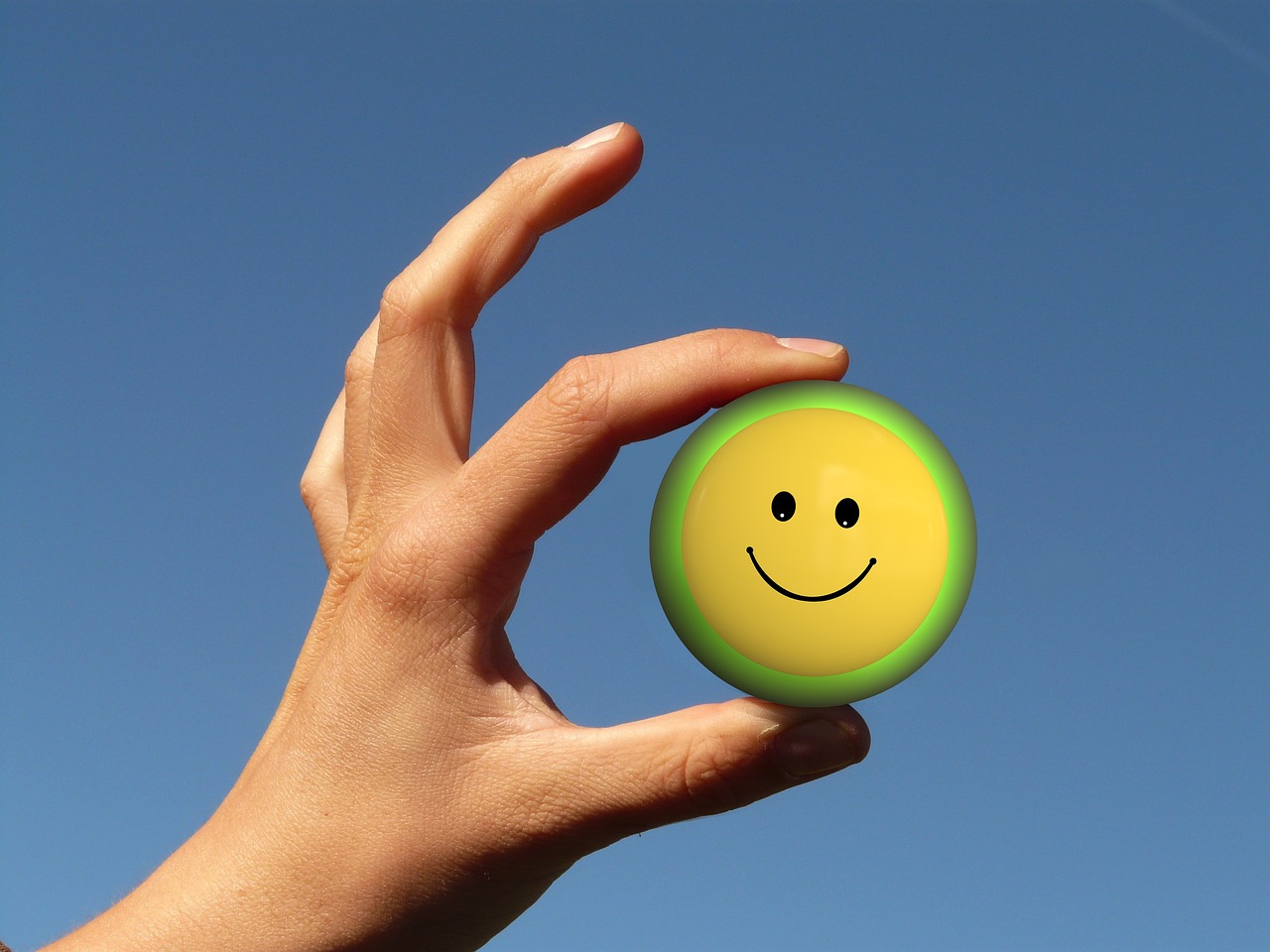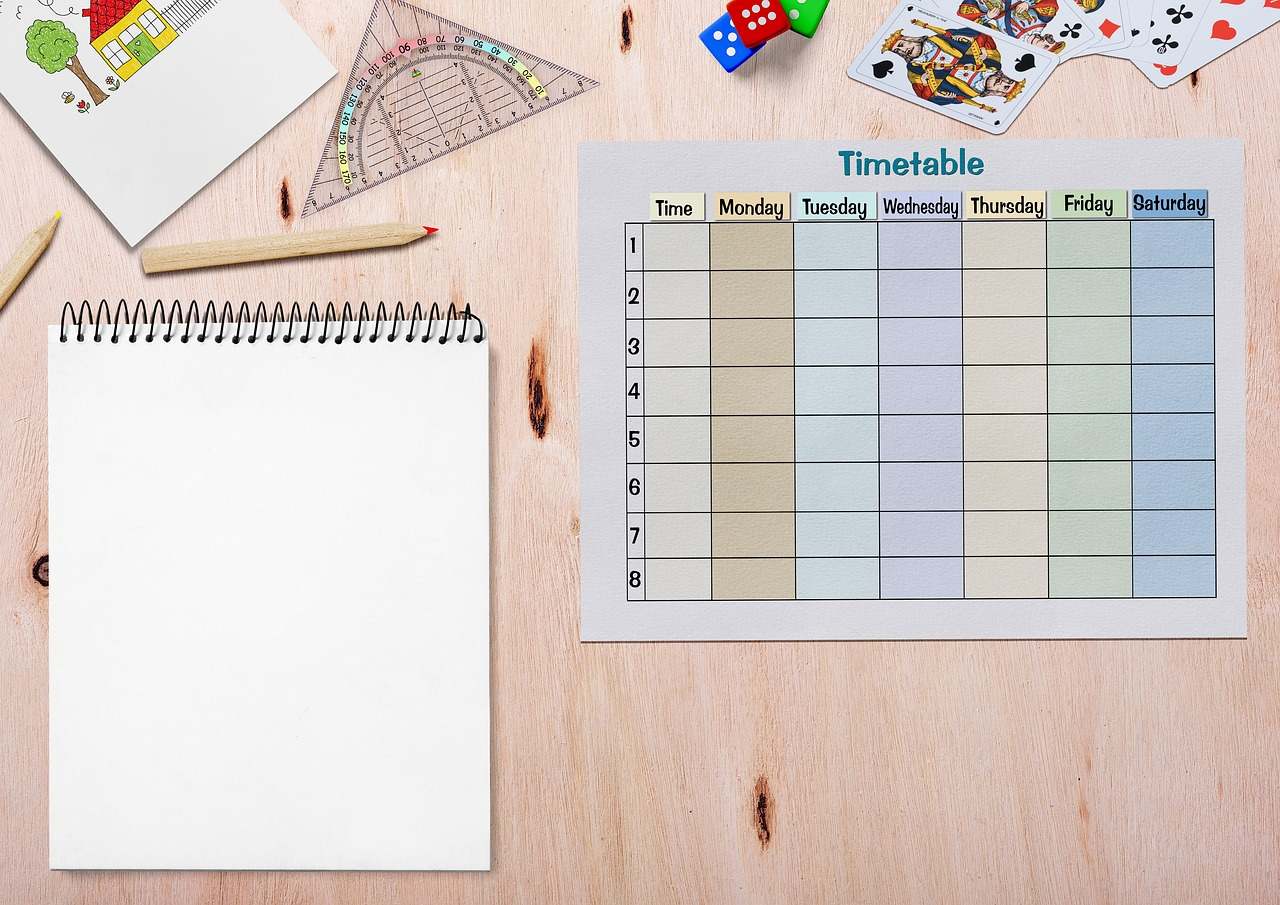
Are you a PE teacher struggling with an overwhelming workload? You’re not alone! Many PE teachers face the challenge of balancing teaching, planning, marking, and additional responsibilities. But what if we told you how to reduce PE teacher workload and still deliver quality teaching to your students?
In this blog post, we’ll explore a variety of strategies and techniques that can help to reduce teacher workload more effectively, achieve a better work-life balance, and ultimately enhance the learning experience for your students.
Let’s dive in!
1. Maximising Technology for PE Lesson Planning
In this hectic world, the use of technology has become a major tool in education. Utilising modern tech for physical education (PE) lesson planning can be a necessary aid in simplifying and reducing teacher workload.
There is an array of online resources, automation tools and organisational applications that can help save time and effort when it comes to preparation for lessons.
PE teachers can drastically reduce their preparation time and offer stimulating, interactive learning opportunities to students by using digital resources available on the internet.
Let’s look at some examples:
Teaching resources PE Scholar provides hundreds of high-quality teaching resources, saving you hours of planning time and helping you to create outstanding lessons that inspire and motivate students.
Classroom management and networking platforms Google Classroom or Schoology are classroom management and social networking platforms that enable teachers to create engaging, tailor made learning experiences without hassle.
AI solutions for planning and assessment Automation can significantly reduce your workload and be a game-changer for teaching. For example, with Beep Fitness Test apps you are able to instantly assess students’ performance. AI solutions such as ConnectedPE make crafting and following lesson plans easy, while providing feedback quickly.
Apps for differentiation, formative assessment and lesson starters There are also many useful apps out there. Try communication tools like Remind, SeeSaw for differentiated instruction or Plickers for fun and formative assessment of progress. There are also team organisers such as Team Shake, and fun lesson starters such as Sweat Deck and GoNoodle
Integrating technology into your practice can free up time spent on creating lesson plans, tracking student progress, and giving pupil feedback. Not only do these digital resources simplify lesson planning but they help to establish an enjoyable learning environment!
2. Collaborative Approaches to Teaching PE

Collaboration is essential in reducing teacher workload and promoting a positive atmosphere. By coming together, PE educators can design effective physical education plans by using collective ideas and accessible resources. In-school collaboration, professional development programmes and online educator networks offer many opportunities to lessen the demands of the day-to-day activity of a PE teacher.
We will now explore these collaborative methods further.
In-school collaboration
In a school setting, collaboration with school leaders, other teachers and colleagues can bring a wealth of advantages. Together, you can exchange ideas and generate new resources, while expanding your pedagogical practice at the same time.
Here are some ideas for teacher collaboration in school:
Professional learning communities (PLCs). PLCs are groups of teachers and school leaders who meet regularly to discuss their teaching, share resources, and learn from each other. PLCs can be organised by grade level, subject area, or school-wide.
Team teaching. Team teaching is when two or more teachers work together to teach a class. This can be a great way to share expertise and resources, and to provide students with different perspectives.
Co-planning. Co-planning is when teachers work together to plan lessons, units, or assessments. This can help to ensure that teachers are aligned on their curriculum and expectations, and that students are receiving a consistent educational experience.
Data teams:.Data teams are groups of teachers who meet to analyse student data and use that information to improve their teaching. Data teams can help to identify students who are struggling and need extra support, as well as to identify areas where the curriculum or teaching practices need to be adjusted.
Mentoring. Mentoring is a one-on-one relationship where a more experienced teacher provides support and guidance to a less experienced teacher. Mentoring can be a valuable way for new teachers to learn from the experience of their colleagues.
Share resources. Teachers can share resources such as lesson plans, handouts, and assessments with each other. This can save time and effort, and it can also help to ensure that all students are receiving high-quality instruction.
Observe each other’s classrooms. Teachers can observe each other’s classrooms to learn new teaching strategies and to get feedback on their own teaching.
Collaborate on projects. Teachers can collaborate on projects such as cross-curricular units, field trips, and school-wide events. This can help to break down the silos between different departments and create a more integrated learning experience for students.
Professional development
Why not attend professional development workshops and conferences together with your colleagues? This can help you to learn new skills and strategies, and to network with other educators.
PE teachers have the opportunity to access a wide range of lesson plans, resources, support and networking opportunities through professional development organisations. For example: afPE or PESSPA. These organisations are up-to-date with current trends in physical education and provide helpful collaborations between members for sharing experiences.
By engaging in professional development, you can stay ahead of the game.
Online teacher communities
For PE teachers, the advantages of participating in online teacher communities are vast. You can access inspiring lesson plans, activities and resources tailored to your classes through platforms such as Elementary PE Teacher and PE Teachers UK communities on Facebook.
Engaging with your peers within these communities can stimulate new ideas that contribute to efficient time management.
3. Efficient Planning Strategies for PE Lessons

Creating lessons plans that result in engaging delivery is a key part of the role of a PE teacher. To make this task less time consuming, use efficient lesson plans that prioritise objectives and are flexible to change. Let’s look closer into these strategies now!
Start with the end in mind. What do you want your students to learn by the end of the lesson? Once you know what you want them to learn, you can start to plan the activities and tasks that will help them achieve those goals.
Be mindful of time. PE lessons should be active and engaging, but it’s important to make sure that you don’t spend too much time on any one activity. Aim to have a variety of activities planned, and be flexible enough to adjust your plans as needed.
Consider the needs of all students. PE lessons should be inclusive and accessible to all students, regardless of their skill or fitness level. Make sure to provide options for students who need more or less support, and be prepared to modify activities as needed.
Use equipment wisely. PE lessons can be a lot of fun, but it’s important to use equipment safely and responsibly. Make sure that you have enough equipment for all students, and that you know how to use it properly.
Be creative! There are many different ways to teach PE. Don’t be afraid to try new activities and games, and to adapt your lessons to meet the needs of your students.
Use a lesson planning template. This can help you to stay organised and to make sure that you cover all of the important elements of a PE lesson.
Plan ahead. Don’t wait until the last minute to start planning your lessons. This will give you more time to think about your goals and to gather the necessary resources.
Be flexible. Things don’t always go according to plan, so it’s important to be flexible and to be prepared to adjust your lessons as needed.
Have fun! PE lessons should be enjoyable for both students and teachers. If you’re having fun, your students will be more likely to learn.
With a little planning and effort, you can create PE lessons that are both efficient and effective.
4. Balancing Work and Personal Life

As a PE teacher, it is important to maintain equilibrium between work and personal life to stay well. To attain this balance, set boundaries, follow stress management strategies and take regular breaks for rest and relaxation. These techniques can help you get the most out of your job without compromising on overall wellbeing.
Setting boundaries. To prevent burnout and stay in balance, it’s important to establish boundaries. Have clear limits for both your work duties and personal activities so that you don’t take on anything unnecessary. Make a list of your tasks and prioritise them. It’s okay to say no to requests, especially if you’re feeling overwhelmed. Don’t be afraid to set boundaries and protect your time and energy.
Stress management techniques. As a PE teacher, you probably don’t need to be told that exercise is a great way to reduce stress and improve your overall mood and well-being. But it is also important to get enough sleep, eat a healthy diet and spend time with loved ones. There are many different relaxation techniques that you can try, such as deep breathing, meditation, and yoga. These techniques can help to calm your mind and body and reduce stress levels.
Importance of breaks and rest. If you’re feeling overwhelmed, take a few minutes to step away from the situation and relax. Go for a walk, listen to music, or do something else that you enjoy. In order to stay on top of your current workload, and maintain a healthy work-life balance, it is essential that you take frequent breaks throughout the day. Short walks or moments of silent reflection can really help restore energy levels and prevent burnout. This should go hand in hand with getting enough sleep.
5. Streamlined Assessment and Feedback Methods

Evaluation and providing feedback are essential to PE teaching. However, this can be time-consuming. To make the process more efficient, take advantage of formative assessment, peer assessment and verbal feedback.
Let’s investigate these approaches in detail.
Formative assessment
Formative assessment in PE is the ongoing process of collecting and analysing data on pupil progress to inform instruction. It is used to identify student strengths and weaknesses, to track pupil progress over time, and to provide feedback to students and teachers. Formative assessment in PE can take a variety of forms including observation, questioning, performance-based assessments, self-assessment and peer assessment
When using formative assessment in PE:
Be clear about your learning objectives. What do you want students to learn by the end of the lesson, unit, or course? Once you know your learning objectives, you can design formative assessments to measure students’ progress towards those objectives.
Use a variety of assessment methods. This will help you to get a more complete picture of student learning.
Provide timely and specific feedback. Feedback should be given to students as soon as possible after they have completed an assessment. The feedback should be specific and actionable, so that students know what they need to do to improve.
Use feedback to inform instruction. Review the data that you have collected from formative assessments and use it to inform your teaching practice. For example, if you see that a large number of students are struggling with a particular skill, you can spend more time reviewing that skill with the class.
Peer assessment
Peer assessment can be a valuable tool for PE teachers. It can help teachers to save time and to get more feedback on student performance. It can also help students to develop important life skills, such as critical thinking, communication, and teamwork.
There are a few different ways to implement peer assessment in PE. One common approach is to have students observe each other while they are performing a skill or activity. After the observation, students can provide feedback to their peers on their strengths and areas for improvement. Another approach is to have students complete a peer assessment rubric. A rubric is a scoring guide that outlines the different criteria that will be used to assess student performance. Students can use the rubric to rate their peers on a variety of factors, such as their skill level, effort, and teamwork.
Peer assessment can be a valuable tool for PE teachers and students alike. However, it’s important to choose the right activity, provide clear instructions, model the process and give students enough time to do it. With careful planning and implementation, it can be a fun and effective way to assess student learning and promote skill development.
Verbal feedback
Verbal feedback is immediate and helps pupils understand what needs to be changed or improved quickly. When giving feedbac:
Be specific. Don’t just say “good job” or “nice try.” Instead, focus on specific aspects of the student’s performance. For example, you could say “I liked the way you kept your eye on the ball” or “You’re getting better at using your legs to generate power.”
Be timely. Give feedback as soon as possible after the student has completed an activity or drill. This will help the student to understand what they are doing well and what they need to improve on.
Be constructive. Focus on the student’s strengths and areas for improvement. Be sure to offer specific suggestions for how the student can improve.
Be positive. Even if the student is struggling, try to focus on their strengths and offer encouragement.
6. Effective Communication

PE teachers must effectively communicate within the school to stay on top of their workload. Effective communication is also essential for creating a positive and supportive learning environment. PE teachers can communicate in a variety of ways, including:
Building relationships with students, parents, and other staff members. Getting to know the people you are communicating with will help you to build trust and rapport. This will make it easier to communicate effectively with them.
Being proactive. Don’t wait until there is a problem to communicate. Communicate regularly with the school community about your program, your expectations, and your students’ progress.
Using a variety of communication methods. Some people prefer to communicate in writing, while others prefer to communicate verbally. Use a variety of communication methods.
Being clear and concise. When you communicate, make sure that your message is clear and concise. Avoid using jargon or technical language.
Being respectful and positive. Even if you are communicating about a negative situation, be sure to do so in a respectful and positive way.
Sending regular newsletters or emails to parents and students. These newsletters or emails can include information about the PE program, upcoming events, and student progress.
Using social media. Social media can be a great way to communicate with students and parents about the PE program and to share photos and videos of students’ accomplishments.
By communicating effectively with the school community, PE teachers can help to create a positive and supportive learning environment for all students.
7. Time Management Techniques for PE Teachers

Having good time management skills is essential for effectively managing a teacher’s workload. Good use of non-contact time or “teachers time”, establishing priorities and avoiding taking on too much work all help.
Let us explore these further:
Organising non-contact time. Managing a teachers workload can be much easier if non-contact, or “teachers time,” is used strategically. Make sure you are organised – make a list of the tasks that you need to complete during your non-contact time and prioritise them. Don’t try to work for the entire length of your non-contact time. Get up and move around every 20-30 minutes
Task prioritisation. By prioritising tasks, PE teachers can manage their time effectively. Start by making a list of all of your tasks. This may include planning and preparing lessons, assessing student learning, grading assignments, completing professional development activities, collaborating with other staff members, and meeting with parents. Once you have a list of all of your tasks, prioritise them based on importance and urgency. Also consider your time constraints and prioritise the tasks that require the most time first. Once you’ve prioritised your list, break down large tasks into smaller, more manageable tasks. This will make the tasks seem less daunting and more achievable. Schedule time in your calendar to complete each task.The Eisenhower method is a great way to help with this process.
Avoiding over-commitment. Effectively managing one’s workload relies on being aware of when tasks should not be taken on or are out of scope. To avoid becoming overburdened, learning to say no and setting clear boundaries can help you focus your energy on the most important responsibilities. This way you can have time for both career and personal obligations.
8. Supporting Mental Health and Well-being

Staff workload in schools is notoriously heavy. As the academic year progresses, many teachers find themselves becoming more and more stressed. PE teachers have the extra tasks of organising sports events and numerous extra curricular activities. Allowing time to look after your mental health and overall wellbeing is essential. Try to develop self-care practices combined with mindfulness techniques. Let us look into some strategies further:
Self-care strategies. PE teachers should make self-care a priority for improving their mental health and reducing workload. This can involve journaling and practising gratitude but also doing activities that you enjoy and that make you feel good. This could include reading, listening to music, spending time outdoors, or pursuing a hobby. Remember to make time for the fun stuff!
Mindfulness techniques. Techniques such as mindful breathing, body scans and guided meditation can be used to effectively manage stress levels, which in turn enhances mental health. By becoming more aware of our thoughts, emotions and physical sensations we can better control them allowing us to lead more present lives.
A whole school approach to mental health and wellbeing
The UK government is providing Senior mental health lead training to equip your mental health lead to develop a whole school approach to mental health and wellbeing. A £1,200 grant is available to fund training to promote and support the mental health and wellbeing of pupils and staff. Click here to apply for the grant.
There is also a school workload reduction toolkit available to encourage schools to evaluate the impact of workload in their school and provides practical resources to address it.
Summary
Managing, and where possible, reducing workload is essential in ensuring the best learning experience for your students and a successful teaching practice. This involves using technology in lesson planning, collaborating with colleagues, streamlining assessment processes and providing feedback efficiently. Balancing work and life means taking time for self-care. Ultimately this helps you operate smarter instead of harder!
Frequently Asked Questions
What can be done to reduce PE teacher workload and strike a good work life balance?
In order to reduce teacher workload, it is important for school leaders to foster a healthy workplace culture by setting the right example and monitoring how teachers are doing. Clear targets should be established while any implemented changes must also be managed carefully so as not to overburden already busy teachers.
How do you beat PE teacher exhaustion?
As a teacher, it’s important to prioritise self-care and set clear boundaries when working in order to prevent exhaustion. Identify any early warning signs of becoming overwhelmed, take time for yourself frequently throughout the day, build meaningful connections with others as often as possible.
Remember who you are beyond your role in education and make sure not to overburden yourself by excessively grading or taking on too many roles simultaneously. Lastly don’t be afraid of making use of mental health days whenever they may be necessary.
What is the average workload for PE teachers?
Teaching has been recognised by OfSTED and the DfE as a demanding career. PE teachers at typically spend 21.3 hours delivering lessons in a school week, and 54 overall including class preparation, sports events and pastoral support duties. This extra 14 hours outside the standard school day can place pressure on many teachers resulting in feelings of stress, exhaustion or unease. School teachers must devote time to preparing lessons each week as well as tending to students’ wellbeing needs. In addition, PE teachers spend alot of time moving kit around, organising sports events and extra curricular activities.
How can technology help reduce PE teachers’ workload?
Making lesson planning simpler and more efficient is possible with technology. It can help you manage tasks quickly, providing a way to save you time while still giving your utmost in teaching lessons. Planning ahead for classes becomes easier when taking advantage of the different resources out there.
What are some collaboration strategies that can help reduce my workload?
Engaging in collaborations with other teachers, be it within the school building or outside through professional learning networks and online forums, can lighten your workload by allowing you to draw upon shared resources, knowledge and tips.
Key Takeaways
- Maximise tech and online resources to reduce PE teacher workload
- Collaborate with other teachers
- Incorporate efficient lesson planning strategies
- Use time management techniques
- Remember self care for wellbeing
Want to know more?
For further top tips to reduce workload, read our other blog post on teacher workload. We also give further advice on teacher wellbeing including our 13 wellbeing tips, avoiding teacher burnout and the impact of Covid-19. If you need further help to plan lessons, then head to the PE Scholar website, which offers a range of lesson plans and resources that can help you manage your workload and save hours of time.


Responses